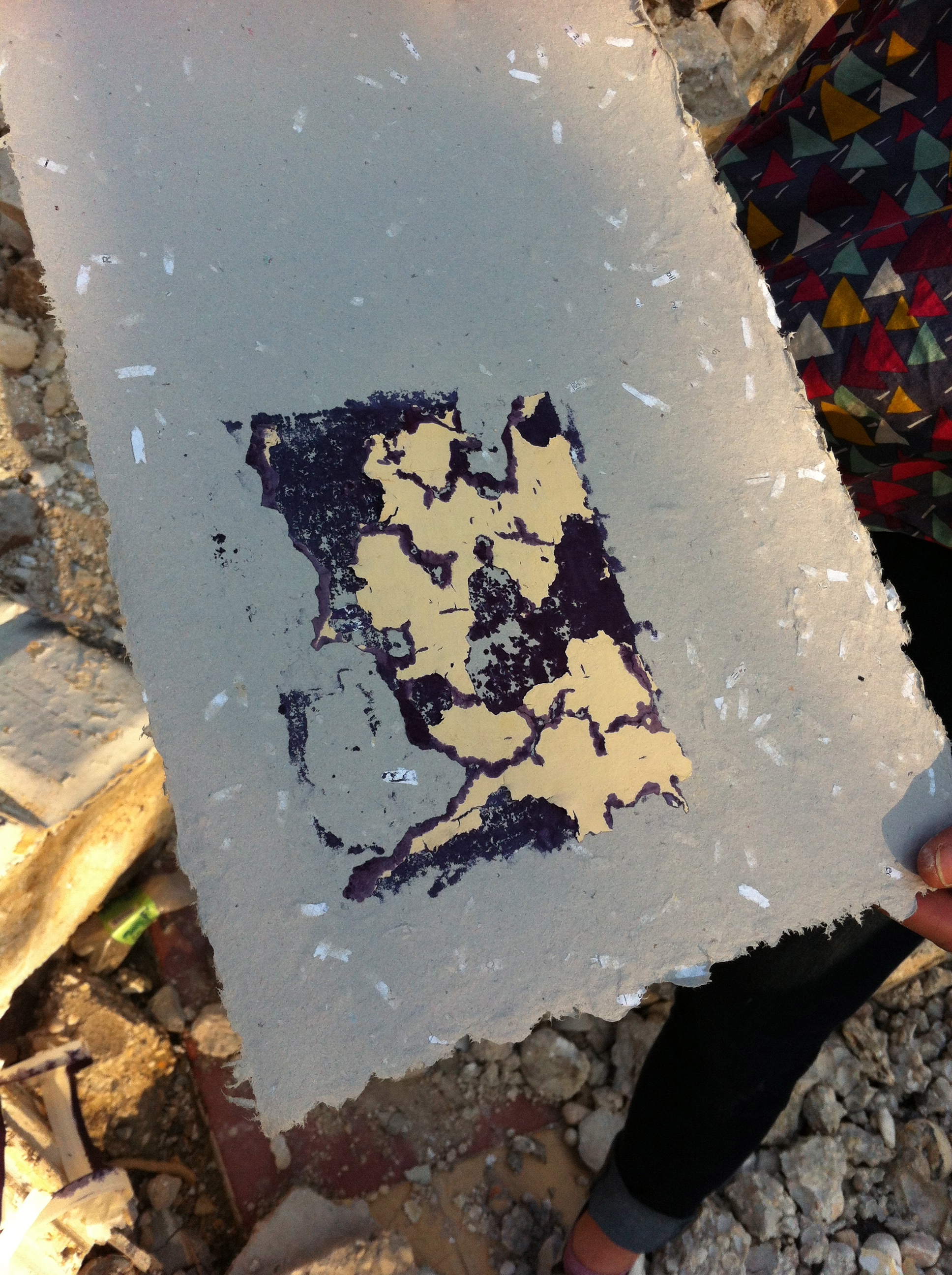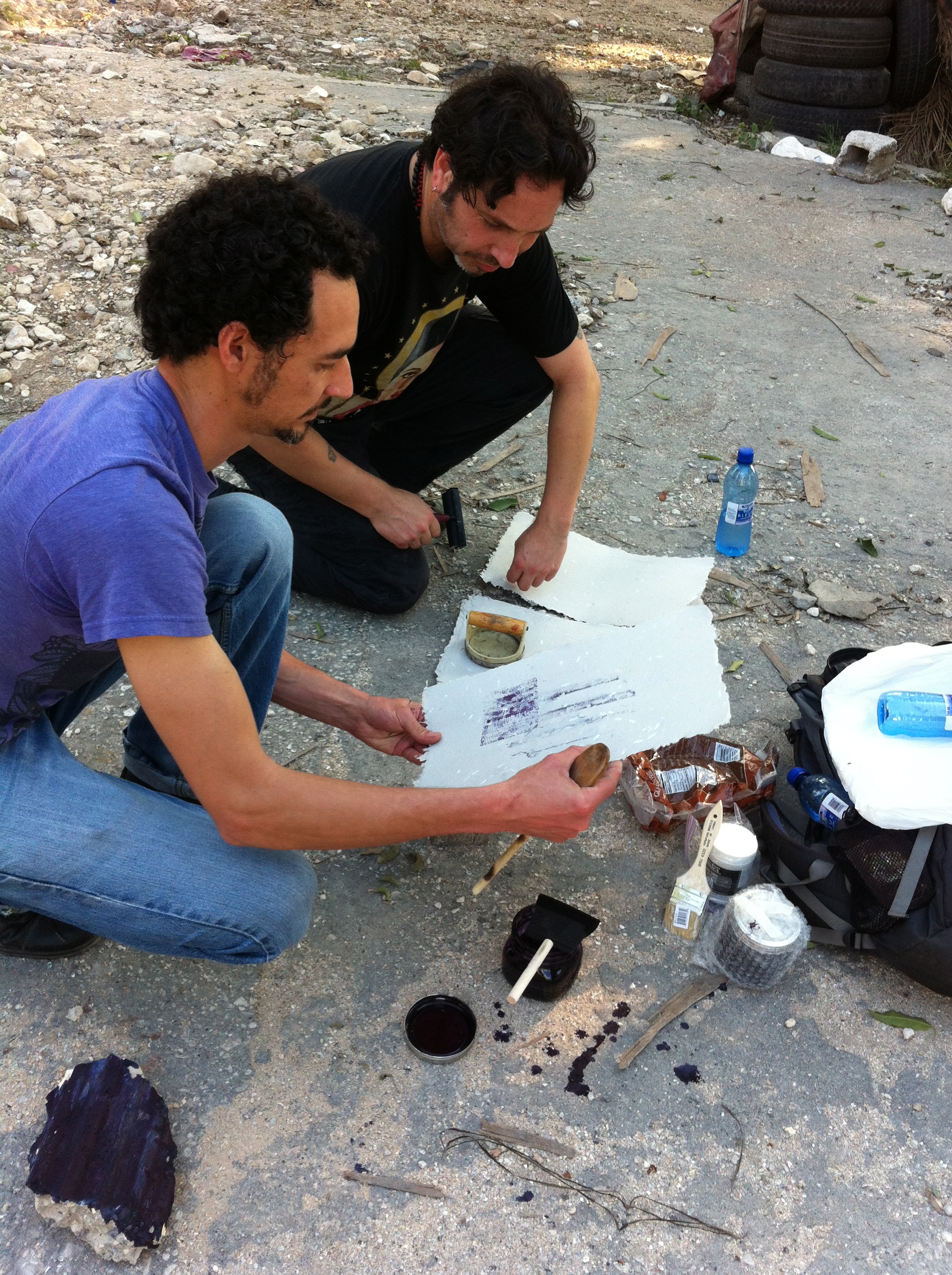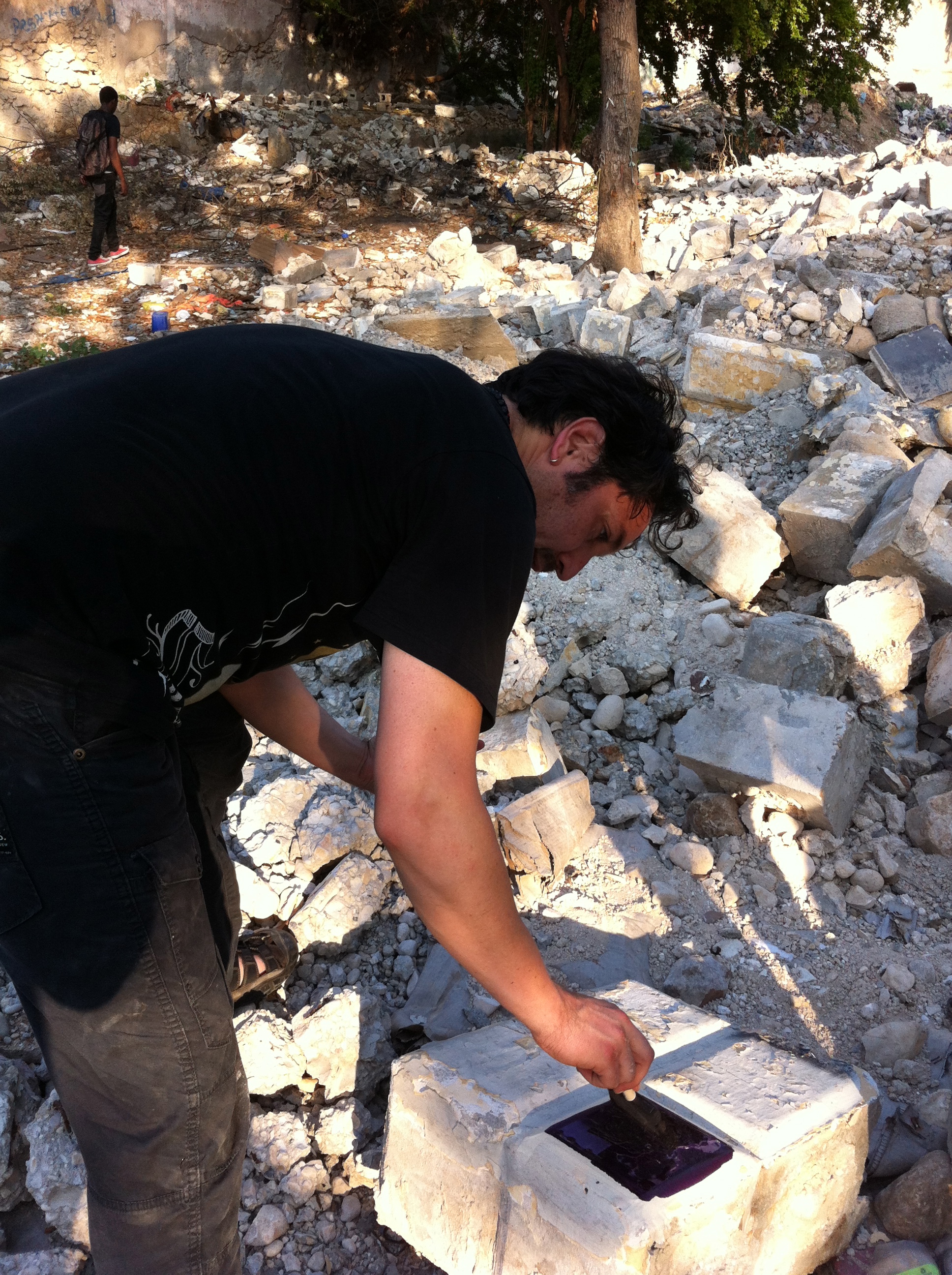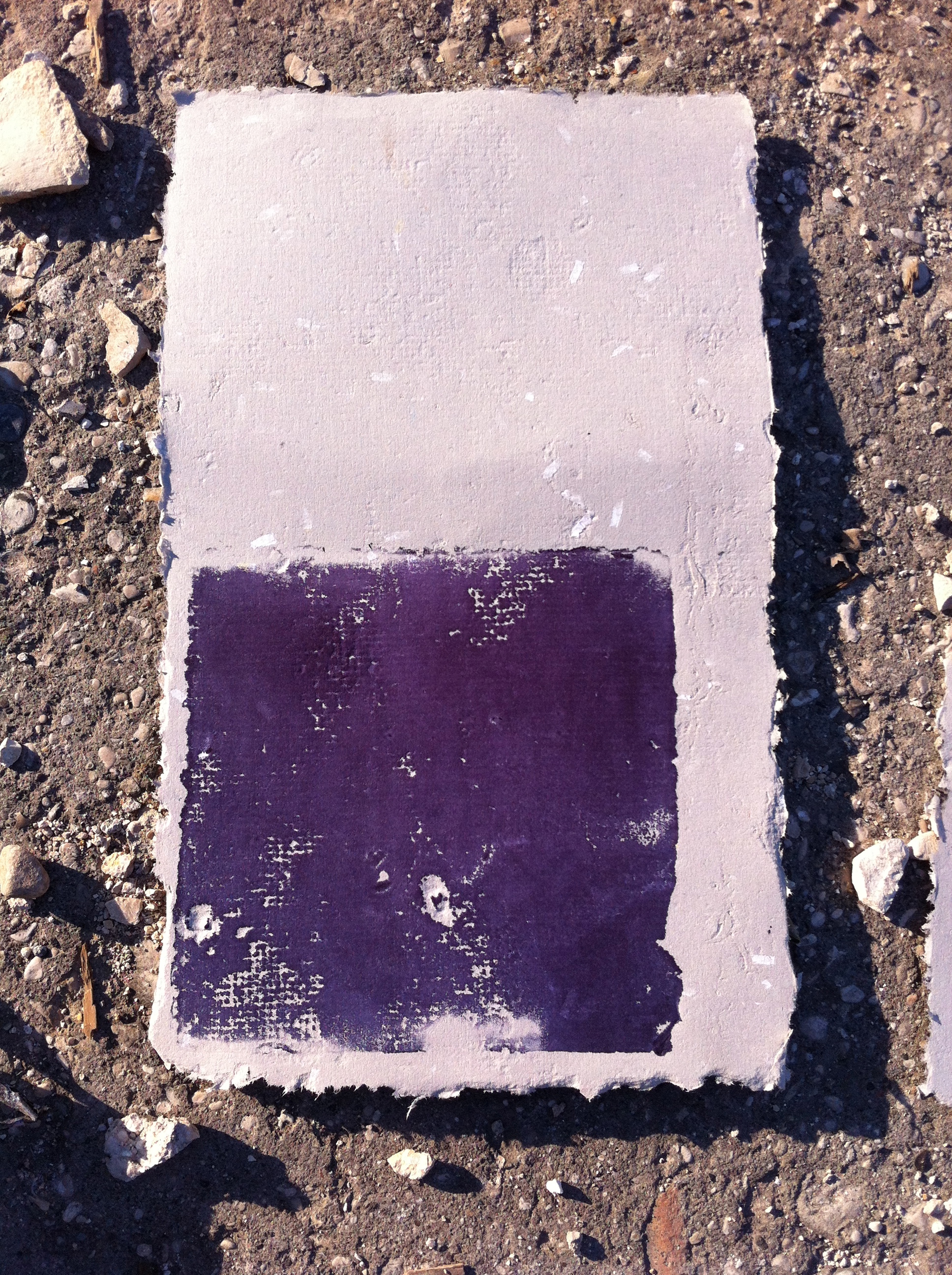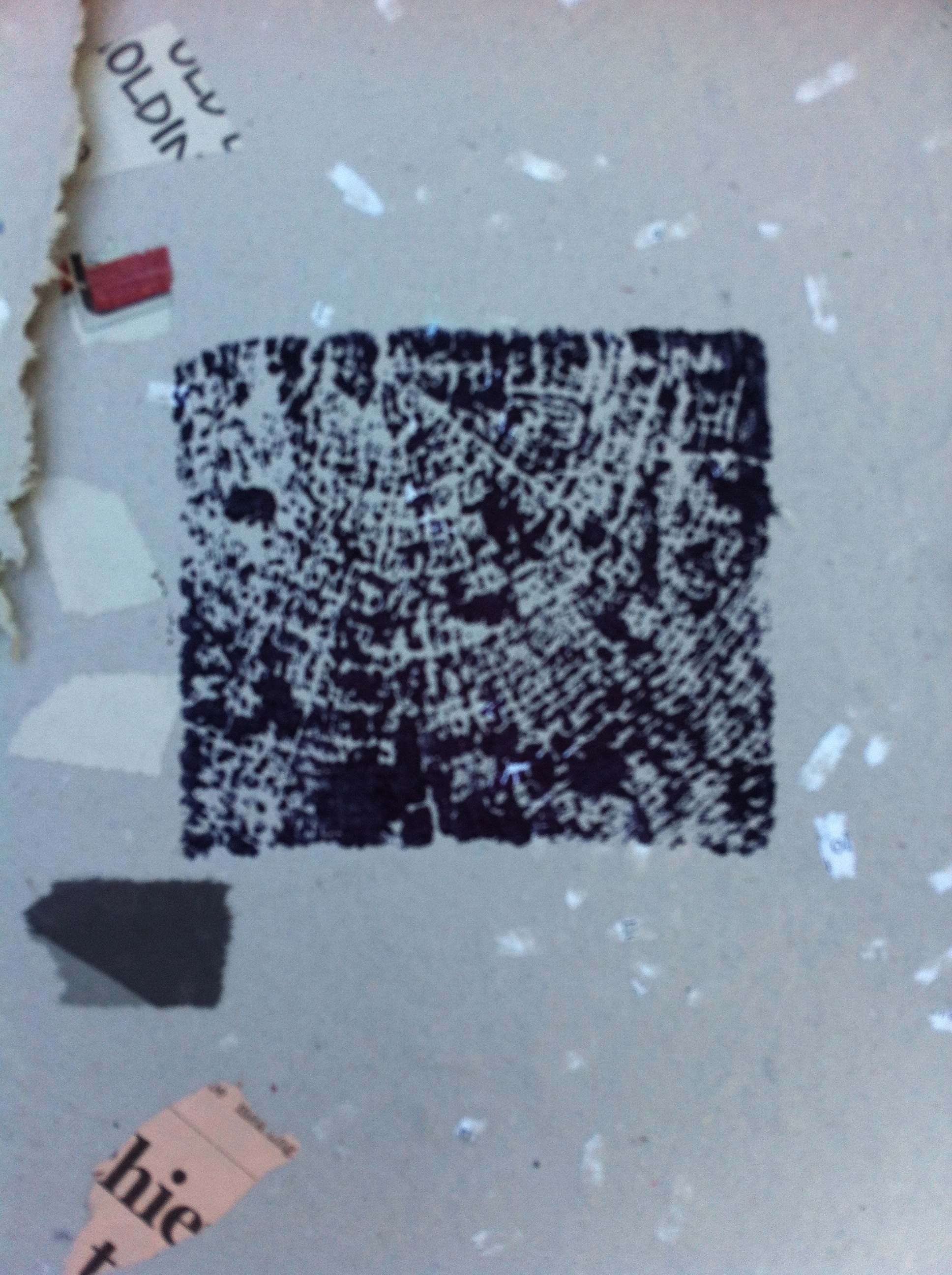On Saturday November 23, Edgar Endress, Elsabe Dixon and Jorge Porrata, three artists from George Mason University, took a 6 am flight to NYC where they met with their collaborating team from Caribbean Intransit Art Magazine – Marielle Barrow and Moira Williams. All arrived at Haiti’s Port-au-Prince International airport around 2:30 pm.
Floating Lab Collective proposed to participate in the 3rd 2013 Ghetto Biennale with a project that supported the idea of DECENTERING THE MARKET AND OTHER TALES OF PROGRESS. This topic has evolved over a period of two prior biennials since the organization’s first opening in December 2009 when the Sculptors of Grand Rue, Atis-Rezistans, organized by Andre Eugene in Port-au-Prince, teamed up with an artist and curator, Leah Gordon from London, and hosted their first ‘Ghetto Biennale’. They invited fine artists, film-makers, academics, photographers, musicians, architects and writers, from radically different backgrounds, to work, and witness work made collaboratively in the Grand Rue area of Port-Au-Prince, Haiti.
This event has become a platform where international visiting and local Haitian artists as well as academics can share philosophies, ideas and aesthetic practices. A local site-specific installation in the Grand Rue area has allowed Haitian artists to present their work, In Situ (Latin: In Position), to a wider global audience while also offering an alternative model to tourist and object driven art. It is an art platform interested in cultivating contemporary discussions addressing international and global cultural shifts.
The key issues, faced by artists and art business professionals conducting their practices/businesses internationally, are multifaceted. After the Peoples Republic of China joined the World Trade Organization in 2001 in an attempt to embrace capitalism and engage in world trade, the commercial and noncommercial market place for trading and exhibiting art, has changed. The global market is now being redefined. Adding to this the increased use of the worldwide web and economically accessible digital technologies, the art world has to start operating very differently than twelve years ago.
The 3rd Ghetto Biennale in Port-au-Prince is an example of this seismic shift, which, while creating increased opportunities for artists and art business professionals to make and exhibit and trade artworks in Haiti, also presents some challenges that reveal the complexities of the global market. One of these challenges is the question of how to uphold the globally accepted UN principle of acknowledging the sovereignty of states or provinces or territory within a nation state to govern itself and determine its own laws pertaining to their autonomy within the global art market. How can local culture be de-commodified and its value regenerated?
The project proposed by Edgar Endress (Floating Lab Collective) and Marielle Barrow (Caribbean Intransit) for the 3rd Ghetto Biennale explored the principles and practicalities involved in operating a global project while pushing the boundaries of static systems – like tourism - which tend to snuff out creative engagement between different social and economic groups in Port-au-Prince. The social and economic dialogue this project created, both strengthened future aspects of practicing socially engaging processes, while also operating in compliance with the need in Port-au-Prince for cultural affirmation and regeneration of Haitian global interconnectedness and entrepreneurship.
The project took the form of a media lab within which five different components were addressed while interacting with artists selected by the Ghetto Biennale curators, Creole artists working in the ghetto of Port-au-Prince and French speaking artists studying at the Art Academy ENARTS, as well as local red zone audiences:
